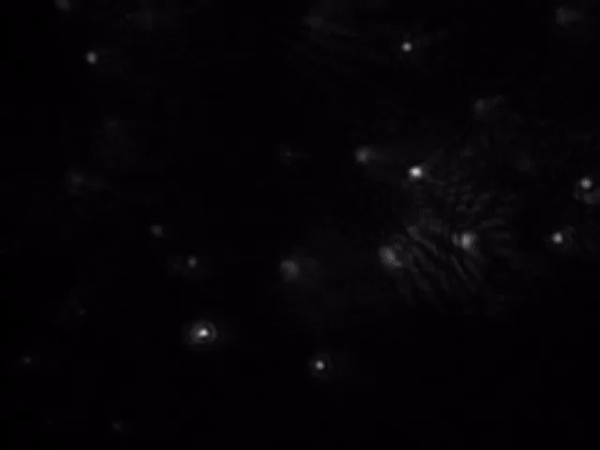|
Eigencolloid
Eigencolloid is a term derived from the German language (''eigen'': own) and used to designate colloids made of pure phases. Most often such colloids are formed by the hydrolysis of heavy metals cations or radionuclides, such as, ''e.g.'', Tc(OH)4, Th(OH)4, U(OH)4, Pu(OH)4, or Am(OH)3. Colloids have been suspected for the long-range transport of plutonium on the Nevada Test Site. See also * Cations hydrolysis * Colloid-facilitated transport Colloid-facilitated transport designates a transport process by which colloidal particles serve as transport vector of diverse contaminants in the surface water (sea water, lakes, rivers, fresh water bodies) and in underground water circulating in f ... Colloidal Silver References * * * Breynaert E. (2008). PhD Thesis. Catholic University of LeuvenFormation, stability and applications of eigencolloids of technetium.* * Actinides Colloids Colloidal chemistry {{chem-stub ... [...More Info...] [...Related Items...] OR: [Wikipedia] [Google] [Baidu] |
Colloid
A colloid is a mixture in which one substance consisting of microscopically dispersed insoluble particles is suspended throughout another substance. Some definitions specify that the particles must be dispersed in a liquid, while others extend the definition to include substances like aerosols and gels. The term colloidal suspension refers unambiguously to the overall mixture (although a narrower sense of the word ''suspension'' is distinguished from colloids by larger particle size). A colloid has a dispersed phase (the suspended particles) and a continuous phase (the medium of suspension). The dispersed phase particles have a diameter of approximately 1 nanometre to 1 micrometre. Some colloids are translucent because of the Tyndall effect, which is the scattering of light by particles in the colloid. Other colloids may be opaque or have a slight color. Colloidal suspensions are the subject of interface and colloid science. This field of study was introduced in 1845 by Itali ... [...More Info...] [...Related Items...] OR: [Wikipedia] [Google] [Baidu] |
Colloids
A colloid is a mixture in which one substance consisting of microscopically dispersed insoluble particles is suspended throughout another substance. Some definitions specify that the particles must be dispersed in a liquid, while others extend the definition to include substances like aerosols and gels. The term colloidal suspension refers unambiguously to the overall mixture (although a narrower sense of the word ''suspension'' is distinguished from colloids by larger particle size). A colloid has a dispersed phase (the suspended particles) and a continuous phase (the medium of suspension). The dispersed phase particles have a diameter of approximately 1 nanometre to 1 micrometre. Some colloids are translucent because of the Tyndall effect, which is the scattering of light by particles in the colloid. Other colloids may be opaque or have a slight color. Colloidal suspensions are the subject of interface and colloid science. This field of study was introduced in 1845 by Italian ... [...More Info...] [...Related Items...] OR: [Wikipedia] [Google] [Baidu] |
Hydrolysis
Hydrolysis (; ) is any chemical reaction in which a molecule of water breaks one or more chemical bonds. The term is used broadly for substitution reaction, substitution, elimination reaction, elimination, and solvation reactions in which water is the nucleophile. Biological hydrolysis is the cleavage of biomolecules where a water molecule is consumed to effect the separation of a larger molecule into component parts. When a carbohydrate is broken into its component sugar molecules by hydrolysis (e.g., sucrose being broken down into glucose and fructose), this is recognized as saccharification. Hydrolysis reactions can be the reverse of a condensation reaction in which two molecules join into a larger one and eject a water molecule. Thus hydrolysis adds water to break down, whereas condensation builds up by removing water. Types Usually hydrolysis is a chemical process in which a molecule of water is added to a substance. Sometimes this addition causes both the substance and w ... [...More Info...] [...Related Items...] OR: [Wikipedia] [Google] [Baidu] |
Heavy Metals
upright=1.2, Crystals of osmium, a heavy metal nearly twice as dense as lead">lead.html" ;"title="osmium, a heavy metal nearly twice as dense as lead">osmium, a heavy metal nearly twice as dense as lead Heavy metals are generally defined as metals with relatively high density, densities, atomic weights, or atomic numbers. The criteria used, and whether metalloids are included, vary depending on the author and context. In metallurgy, for example, a heavy metal may be defined on the basis of density, whereas in physics the distinguishing criterion might be atomic number, while a chemist would likely be more concerned with chemical property, chemical behaviour. More specific definitions have been published, but none of these have been widely accepted. The definitions surveyed in this article encompass up to 96 out of the 118 known chemical elements; only mercury, lead and bismuth meet all of them. Despite this lack of agreement, the term (plural or singular) is widely used in s ... [...More Info...] [...Related Items...] OR: [Wikipedia] [Google] [Baidu] |
Cations
An ion () is an atom or molecule with a net electrical charge. The charge of an electron is considered to be negative by convention and this charge is equal and opposite to the charge of a proton, which is considered to be positive by convention. The net charge of an ion is not zero because its total number of electrons is unequal to its total number of protons. A cation is a positively charged ion with fewer electrons than protons while an anion is a negatively charged ion with more electrons than protons. Opposite electric charges are pulled towards one another by electrostatic force, so cations and anions attract each other and readily form ionic compounds. Ions consisting of only a single atom are termed atomic or monatomic ions, while two or more atoms form molecular ions or polyatomic ions. In the case of physical ionization in a fluid (gas or liquid), "ion pairs" are created by spontaneous molecule collisions, where each generated pair consists of a free electron and ... [...More Info...] [...Related Items...] OR: [Wikipedia] [Google] [Baidu] |
Radionuclide
A radionuclide (radioactive nuclide, radioisotope or radioactive isotope) is a nuclide that has excess nuclear energy, making it unstable. This excess energy can be used in one of three ways: emitted from the nucleus as gamma radiation; transferred to one of its electrons to release it as a conversion electron; or used to create and emit a new particle (alpha particle or beta particle) from the nucleus. During those processes, the radionuclide is said to undergo radioactive decay. These emissions are considered ionizing radiation because they are energetic enough to liberate an electron from another atom. The radioactive decay can produce a stable nuclide or will sometimes produce a new unstable radionuclide which may undergo further decay. Radioactive decay is a random process at the level of single atoms: it is impossible to predict when one particular atom will decay. However, for a collection of atoms of a single nuclide the decay rate, and thus the half-life (''t''1/2) for ... [...More Info...] [...Related Items...] OR: [Wikipedia] [Google] [Baidu] |
Plutonium
Plutonium is a radioactive chemical element with the symbol Pu and atomic number 94. It is an actinide metal of silvery-gray appearance that tarnishes when exposed to air, and forms a dull coating when oxidized. The element normally exhibits six allotropes and four oxidation states. It reacts with carbon, halogens, nitrogen, silicon, and hydrogen. When exposed to moist air, it forms oxides and hydrides that can expand the sample up to 70% in volume, which in turn flake off as a powder that is pyrophoric. It is radioactive and can accumulate in bones, which makes the handling of plutonium dangerous. Plutonium was first synthetically produced and isolated in late 1940 and early 1941, by a deuteron bombardment of uranium-238 in the cyclotron at the University of California, Berkeley. First, neptunium-238 ( half-life 2.1 days) was synthesized, which subsequently beta-decayed to form the new element with atomic number 94 and atomic weight 238 (half-life 88 years). Since ... [...More Info...] [...Related Items...] OR: [Wikipedia] [Google] [Baidu] |
Nevada Test Site
The Nevada National Security Site (N2S2 or NNSS), known as the Nevada Test Site (NTS) until 2010, is a United States Department of Energy (DOE) reservation located in southeastern Nye County, Nevada, about 65 miles (105 km) northwest of the city of Las Vegas. Formerly known as the Nevada Proving Grounds, the site was established in 1951 for the testing of nuclear devices. It covers approximately 1,360 square miles (3,500 km2) of desert and mountainous terrain. Nuclear weapons testing at the site began with a 1-kiloton-of-TNT (4.2 TJ) bomb dropped on Frenchman Flat on January 27, 1951. Over the subsequent four decades, over 1,000 nuclear explosions were detonated at the site. Many of the iconic images of the nuclear era come from the site. During the 1950s, the mushroom clouds from the 100 atmospheric tests could be seen from almost away. The city of Las Vegas experienced noticeable seismic effects, and the mushroom clouds, which could be seen from the downtown ho ... [...More Info...] [...Related Items...] OR: [Wikipedia] [Google] [Baidu] |
Hydrolysis
Hydrolysis (; ) is any chemical reaction in which a molecule of water breaks one or more chemical bonds. The term is used broadly for substitution reaction, substitution, elimination reaction, elimination, and solvation reactions in which water is the nucleophile. Biological hydrolysis is the cleavage of biomolecules where a water molecule is consumed to effect the separation of a larger molecule into component parts. When a carbohydrate is broken into its component sugar molecules by hydrolysis (e.g., sucrose being broken down into glucose and fructose), this is recognized as saccharification. Hydrolysis reactions can be the reverse of a condensation reaction in which two molecules join into a larger one and eject a water molecule. Thus hydrolysis adds water to break down, whereas condensation builds up by removing water. Types Usually hydrolysis is a chemical process in which a molecule of water is added to a substance. Sometimes this addition causes both the substance and w ... [...More Info...] [...Related Items...] OR: [Wikipedia] [Google] [Baidu] |
Colloid-facilitated Transport
Colloid-facilitated transport designates a transport process by which colloidal particles serve as transport vector of diverse contaminants in the surface water (sea water, lakes, rivers, fresh water bodies) and in underground water circulating in fissured rocks (limestone, sandstone, granite, ...). The transport of colloidal particles in surface soils and in the ground can also occur, depending on the soil structure, soil compaction, and the particles size, but the importance of colloidal transport was only given sufficient attention during the 1980 years. Radionuclides, heavy metals, and organic pollutants, easily sorb onto colloids suspended in water and that can easily act as contaminant carrier. Various types of colloids are recognised: inorganic colloids (clay particles, silicates, iron oxy-hydroxides, ...), organic colloids (humic and fulvic substances). When heavy metals or radionuclides form their own pure colloids, the term "'' Eigencolloid''" is used to designate pu ... [...More Info...] [...Related Items...] OR: [Wikipedia] [Google] [Baidu] |
Analytical Chemistry (journal)
''Analytical Chemistry'' is a biweekly peer-reviewed scientific journal published since 1929 by the American Chemical Society. Articles address general principles of chemical measurement science and novel analytical methodologies. Topics commonly include chemical reactions and selectivity, chemometrics and data processing, electrochemistry, elemental and molecular characterization, imaging, instrumentation, mass spectrometry, microscale and nanoscale systems, -omics, sensing, separations, spectroscopy, and surface analysis. It is abstracted and indexed in Chemical Abstracts Service, CAB International, EBSCOhost, ProQuest, PubMed, Scopus, and the Science Citation Index Expanded. According to the ''Journal Citation Reports'', it has a 2020 impact factor of 6.986 . The editor-in-chief is Jonathan V. Sweedler (University of Illinois). See also * List of chemistry journals References External links * {{DEFAULTSORT:Analytical Chemistry (Journal) Analytical Chemistry Analyti ... [...More Info...] [...Related Items...] OR: [Wikipedia] [Google] [Baidu] |






